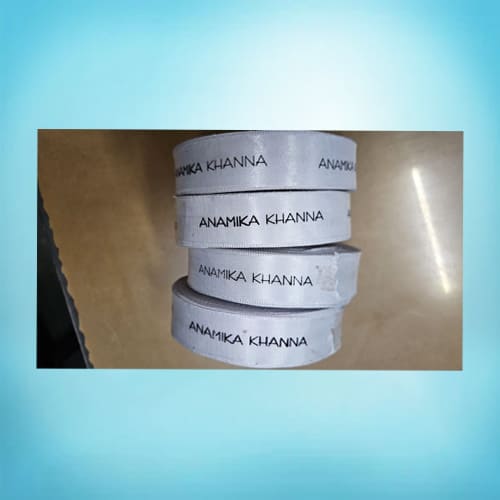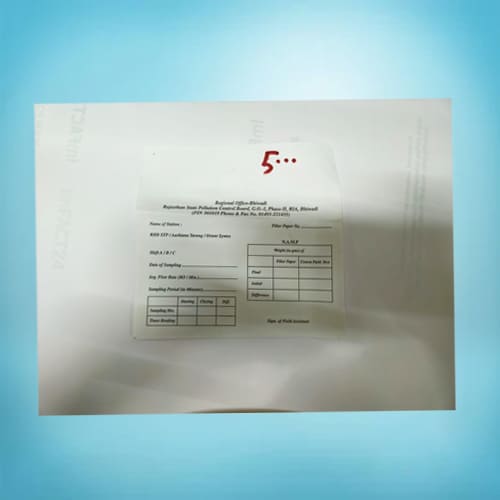
In the world of fashion and textile manufacturing, the smallest details often make the biggest difference. One such detail is the garment label—an essential component that not only carries brand identity but also communicates critical information to consumers. If you're a manufacturer or brand owner in Ghaziabad looking for a reliable partner for garment labels, this blog will help you make an informed decision.
1. Why Garment Labels Are Crucial
Garment labels serve several purposes beyond just aesthetics:
- Branding: A well-designed label enhances your brand’s visibility and builds recognition.
- Compliance: Labels carry mandatory details like fiber content, washing instructions, and country of origin.
- Customer Convenience: Care instructions and sizing information help customers use and maintain garments effectively.
- Sustainability Messaging: Eco-friendly materials and certifications can be highlighted on the label.
A label may be small, but its impact on your brand’s credibility and customer experience is significant.
2. Types of Garment Labels You Can Use
2.1. Woven Labels
These are made on jacquard looms using threads to weave your design into the label. They're durable and ideal for high-end clothing.
2.2. Printed Labels
Typically printed on satin, cotton, or polyester. These are cost-effective and suitable for complex logos and detailed care instructions.
2.3. Heat Transfer Labels
These labels are transferred directly onto fabric using heat. They’re soft, tagless, and ideal for activewear or baby clothes.
2.4. Cotton & Organic Labels
Eco-conscious brands often use cotton labels that reflect sustainability values and offer a natural, soft feel.
2.5. Care and Composition Labels
These labels contain information about garment care (washing, drying, ironing) and the materials used.
2.6. Size Labels
Simple labels that indicate size (e.g., S, M, L, XL), often used in combination with branding labels.
3. What to Look for in a Label Supplier
3.1. Material Variety
The supplier should offer a wide range of materials like satin, damask, cotton, polyester, and heat-transfer films.
3.2. Customization Options
From logo detailing to label shape, size, fold type (loop fold, end fold, center fold), and print techniques, you should be able to customize fully.
3.3. Quality Assurance
Labels should be resistant to washing, ironing, and everyday wear. Ask for samples and conduct wash tests.
3.4. Turnaround Time
Quick sample development and consistent lead times are essential to maintain your production schedules.
3.5. MOQs (Minimum Order Quantities)
A supplier that caters to both small and large orders offers flexibility, especially for startups and boutique labels.
3.6. Compliance & Certifications
For exporters, it’s vital that the labels comply with international standards and use non-toxic inks or materials.
4. Advantages of Sourcing Labels from Ghaziabad
- Cost Efficiency: Saves on logistics and import duties.
- Faster Communication: Quick responses and easier sample verification.
- Customization Flexibility: Face-to-face collaboration and faster design approvals.
- Local Support: On-ground assistance for urgent requirements or troubleshooting.
5. Steps to Choose the Best Label Supplier
-
Request Samples – Always evaluate the material, print quality, and feel.
-
Compare Customization Options – Check if your logo, colors, and sizes can be replicated accurately.
-
Ask for Wash-Tested Samples – Ensure the label withstands laundering.
-
Inquire About Turnaround Time – Important for bulk orders and reorders.
-
Clarify Pricing – Understand costs per label, setup fees, and shipping charges.
6. Sustainability in Garment Labeling
With increasing focus on eco-friendly practices, consider using:
- Recycled Polyester Labels
- Organic Cotton Labels
- Water-Based Inks
- Biodegradable Tag Fasteners
Your label supplier should be able to source and certify such materials if your brand focuses on sustainability.
7. Common Label Finishing Styles
- Center Fold – Folded in the middle, ideal for sewing into seams.
- End Fold – Folds at the edges, sewn flat onto garments.
- Loop Fold – Folded like a loop, often used on the neck or waistline.
- Straight Cut – No folds, sewn directly onto fabric.
- Iron-On – Applied with heat, no stitching required.
Each finish type suits different garment placements and aesthetics.
8. Price Range for Labels
| Label Type | Estimated Price (INR) |
|---|---|
| Woven Damask | â¹3 – â¹7 |
| Printed Satin | â¹2 – â¹5 |
| Heat Transfer | â¹3 – â¹8 |
| Cotton Organic | â¹4 – â¹9 |
| Care/Sizing Labels | â¹1 – â¹3 |
Pricing depends on quantity, size, number of colors, and material type. Always request a detailed quotation.
9. Company You Can Trust
For businesses looking for a trusted garments label supplier in Ghaziabad, Vardhman Enterprises offers a full range of woven, printed, and heat-transfer labels. With fast turnaround times, excellent customization options, and an emphasis on quality, they cater to both startups and established fashion brands.
10. Tips for a Smooth Label Ordering Process
- Finalize label dimensions and fold style
- Use high-resolution logo files
- Approve a physical sample before full production
- Plan for at least 2–3 weeks for delivery
- Store extra labels for reorders or quality checks
Proper planning ensures labels arrive on time, without affecting your stitching or shipping deadlines.
Frequently Asked Questions (FAQ)
Q1. What is the typical lead time for custom garment labels?
Custom labels usually take 7–10 working days for sampling, and 10–15 days for full production. Lead times may vary depending on material and order quantity.
Q2. Can I get eco-friendly labels for my organic clothing line?
Yes. Many suppliers now offer organic cotton, recycled polyester, and biodegradable options, along with certifications.
Q3. Are heat-transfer labels durable?
High-quality heat-transfer labels are long-lasting and resistant to washing, but performance may vary by fabric and washing method. Testing is recommended before bulk orders.
Q4. Do I need care labels for garments sold in India?
While not legally mandatory for all garments, care labels are considered best practice. They improve customer satisfaction and reduce product damage complaints.
Q5. What file format should I send for label design?
Vector files like .AI, .EPS, or high-resolution .PDFs are best. They allow precise color matching and accurate reproduction during production.
Conclusion
Garment labels are more than just a functional necessity—they’re a branding tool, a quality indicator, and often a legal requirement. Whether you're launching a new fashion line or scaling your manufacturing, working with a dependable, detail-oriented supplier is crucial.



